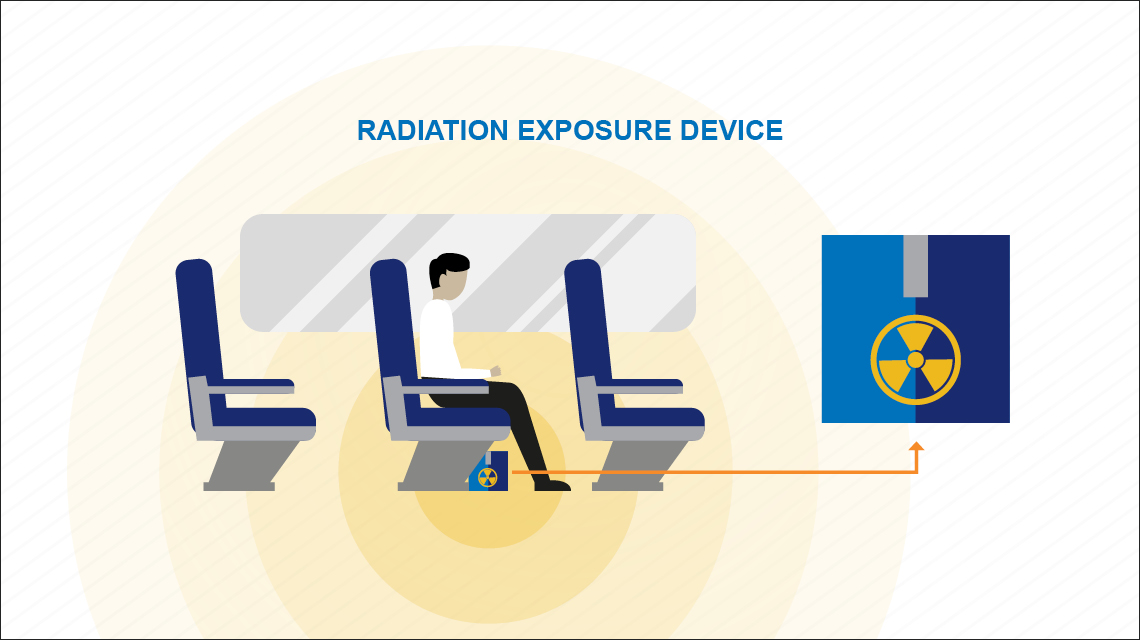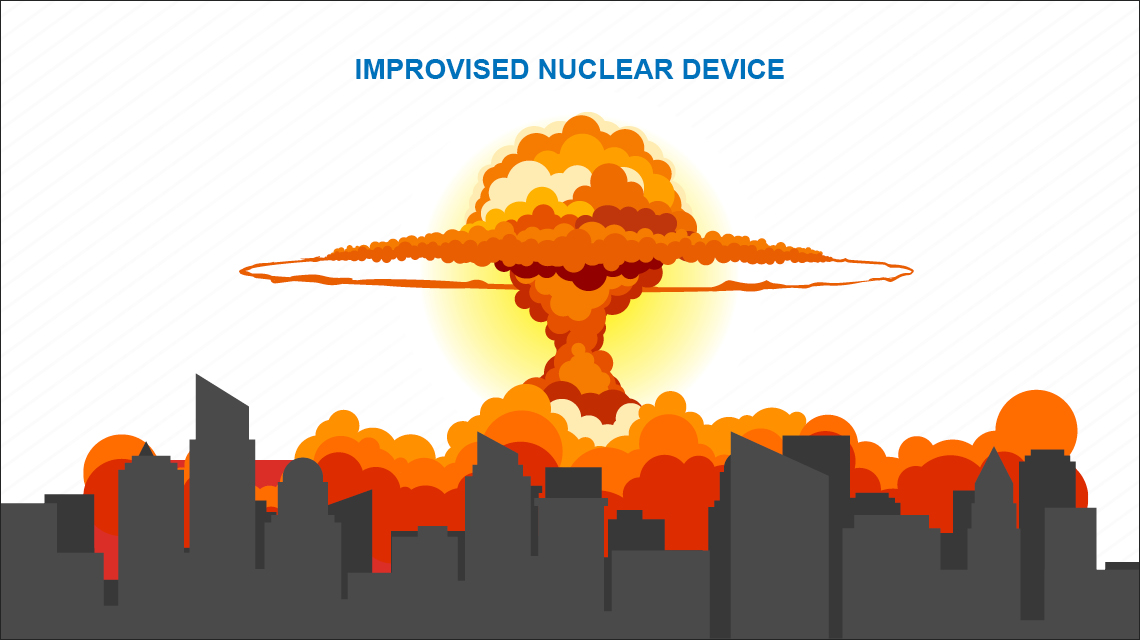Radiation Exposure Device (RED)
These devices contain radioactive material that can expose people to radiation without their knowledge. REDs may be hidden in public places such as under a seat of the train. People who sit near or pass close to REDs may be exposed to radiation.
The dangers REDs pose depend on three factors:
- Type and amount of radioactive material used.
- How long a person spends near the device.
- What parts of a person’s body are exposed to radiation coming from the device.
Radiological Dispersal Device (RDD)
Radiological dispersal devices (RDD), also known as ‘dirty bombs’, are a mix of explosives, and radioactive material. When a bomb explodes, radioactive material is carried into the surrounding area. It is important to know that “dirty” bombs are not “nuclear bombs”: the destructive force of a “dirty” bomb is significantly smaller than that of a nuclear bomb.
People nearby could experience:
- Injury from pieces of radioactive material from bomb.
- Immediate or long-term illness from exposure.
Radioactive dust and smoke can spread farther away and could be dangerous to health if people breathe in dust, eat contaminated food, or drink contaminated water.
Improvised Nuclear Device (IND)
An improvised nuclear device is a type of nuclear weapon.
When it explodes, it gives off four types of energy:
- Shock wave.
- Intense light.
- Heat.
- Radiation.
Fallout
In addition, it produces "fallout", or dust-like particles that fall back to earth after the explosion. Fallout is radioactive and can contaminate anything it lands on.




